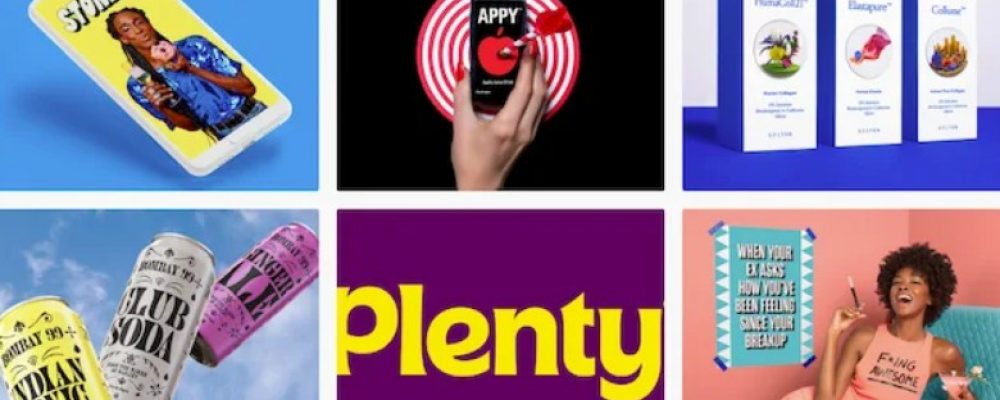Graphic design plays a fundamental role in current advertising. It is a powerful tool that helps capture the audience’s attention. Convey effective messages, and build a strong brand identity.
In this article, we will explore the impact of graphic design in advertising and the key visual strategies to captivate the target audience.
Attracting Visual Attention
Graphic design plays a fundamental role in attracting visual attention in various contexts. Especially in advertising and digital media. Through the use of colors, typography, images, and visual compositions. The aim is to capture the viewer’s gaze and effectively communicate the desired message.
Creativity and originality in graphic design are key to standing out in an environment saturated with visual stimuli. Allowing the brand or advertising message to stand out and generate a lasting impact on the audience.
Furthermore, well-executed graphic design can influence the emotions and attitudes of people, creating a deeper connection with the presented visual content. By creating an attractive and coherent aesthetic. A visual link is established that strengthens the brand’s identity and its messages, often leading to greater retention of the target audience.
Transmission of Clear Messages
Effective graphic design in advertising is based on the ability to convey clear and concise messages in a visually appealing manner. The careful selection of images, illustrations, and graphics not only complements the main message but also reinforces it, creating a lasting impact on the audience.
By skillfully combining text and images in a harmonious way, a balanced visual experience is achieved. Facilitating the audience’s comprehension and assimilation of the message more quickly and effectively. This consistent integration of visual and written elements in advertising graphic design not only captures attention but also ensures that the message is conveyed clearly and memorably. Thus maximizing the impact of the advertising campaign.
Creation of a Strong Brand Identity
The creation of a solid brand identity through graphic design is essential to differentiate oneself in the market and establish a significant connection with the target audience. The strategic use of colors, typography, logos, and cohesive visual elements helps convey the personality and values of the brand in a visually impactful way.
Furthermore, well-executed graphic design not only strengthens the brand’s presence but also fosters recognition and loyalty among consumers. Consistency in graphic design across all brand touchpoints. Is key to forging a strong and enduring identity in the minds of consumers.
Generation of Trust and Credibility
The generation of trust and credibility through graphic design is fundamental for the success of a brand. The use of cohesive and professional visual elements. In all brand materials and platforms conveys an image of reliability and seriousness.
Furthermore, well-executed graphic design, with attention to aesthetics and usability, provides consumers with a sense of professionalism and attention to detail. Contributing to establishing a trusting relationship with the audience.
When graphic design reflects consistency and quality, it builds a positive perception of the brand. Which in turn strengthens its credibility and fosters customer loyalty.
Adaptation to Different Platforms and Media
Adapting to different platforms and media is essential in modern graphic design. With the rise of social media, mobile devices, and other digital channels. It is crucial for graphic design to be versatile and easily adaptable to different formats and sizes without losing its visual impact.
Optimizing the design for each medium, whether it’s print, digital, or mobile, ensures a consistent experience for the audience across all brand touchpoints. Additionally, the ability to adapt demonstrates the brand’s capacity to remain relevant and coherent in an ever-evolving media environment.
Emotions and Visual Narrative
Emotions play a fundamental role in visual narrative. Effective graphic design has the ability to evoke emotions, tell stories. And create meaningful connections with the audience through images, colors, compositions, and visual elements.
By tapping into emotions, graphic design can influence people’s attitudes and perceptions towards a brand or message. Creating a more impactful and memorable experience.
A well-constructed visual narrative guides the viewer through a coherent visual story. Capturing the audience’s attention and allowing them to immerse themselves in the emotional experience that the brand or message aims to convey.
Experimentation and Innovation
Experimentation and innovation in graphic design are vital to maintain relevance and originality in an ever-evolving visual environment.
Likewise, experimentation allows designers to explore new techniques, styles, and creative approaches. Which can result in innovative and exciting graphic solutions. Innovation drives change and evolution. Something essential for standing out in a competitive market.
By being open to experimentation and innovation, graphic designers can push the boundaries of design and offer solutions that surprise and captivate the audience.
Conclusion
Graphic design is a powerful tool in advertising that can make the difference between going unnoticed and capturing the attention of the target audience.
From attracting visual attention and conveying clear messages. To building a strong brand identity and generating trust, graphic design has a significant impact on the success of advertising campaigns.
Through adaptation to different mediums, creation of emotions, and continuous experimentation. Graphic design in advertising becomes a key element to captivate the audience and achieve marketing objectives.





